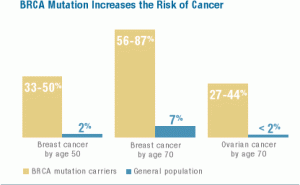Image source: http://www.savethechildren.org/site/apps/nlnet/content2.aspx?c=8rKLIXMGIpI4E&b=8943305&ct=14066953¬oc=1
Humanitarian aid programs exist in two different structures: horizontal programs and vertical programs. Horizontal aid programs aim to strengthen health systems to treat multiple diseases, while vertical aid programs utilize outside agencies to target a specific disease. Much debate surrounds the two different approaches to humanitarian aid.
“Case 8.2 Ethics and Humanitarian Aid: Vertical Aid Programs” discusses a vertical approach to treating cholera in a refugee camp in South Sudan. However, due to the limited resources in the nearby hospital, individuals visit Dr. Asadour’s, physician with a Canadian NGO, temporary work station seeking out care for other illnesses and diseases. Thus, the case poses the following ethical dilemma: Should Dr. Asadour use his resources to treat all individuals despite their disease, or should Dr. Asadour follow the mandate and only treat individuals suffering from cholera?
Due to the nature of the situation, Dr. Asadour ought to continue the vertical approach to aid. Of all disease outbreaks in refugee camps, diarrheal diseases, such as cholera, generate the highest mortality rate (Connolly et al., 2004). In addition, the World Health Organization states, “Cholera is an acute diarrheal disease that can kill within hours if left untreated,” (World Health Organization, 2014). Furthermore, when not treated quickly, a cholera infection can lead to kidney failure, coma, shock from dehydration, and of course death (Mayo Clinic, 2014). Thus, cholera causes a great deal of suffering in a population, especially in refugee camps. Fortunately, however, simple treatment for symptoms of cholera exist. For example, oral rehydration salts successfully treat up to eighty percent of cases of cholera (World Health Organization, 2014). Therefore, Dr. Asadour possess the ability to reduce the suffering of eighty percent of the population who may end up dead from untreated cholera. Thus, on the basis of the principles of nonmaleficence and beneficence, Dr. Asadour ought to admit only patients infected with cholera.
Furthermore, the case explains that Dr. Asadour cannot always determine the cause of an individual’s suffering upon entrance into the medical tent. As a result, he may admit patients who have a different disease. At this point, an additional ethical dilemma arises. Dr. Asadour can either treat the individual or send him or her to the local hospital. Based on emotional state of the refugees, as articulated as frightened, Dr. Asadour ought to treat the patients whom he misdiagnoses during “intake” to minimize harm. For instance, since the refugees traveled unknown distances, admittance into a medical facility would provide the refugees with hope. Therefore, by discharging patients without cholera, Dr. Asadour would be negatively impacting both their physical well-being and mental well-being. Thus, treating all admitted patients, with the initial screening process of cholera patients only, serves as the most ethical course of action.
Moreover, implementing a horizontal approach to aid could have potentially prevented the aforementioned ethical dilemmas. The sustainability of horizontal aid programs sets up the area for greater success and less suffering in the future instead of dependence from vertical aid. Nonetheless, since Dr. Asadour already traveled to South Sudan and set up his clinic, he ought to continue treating patients as previously outlined.
Connolly, M. A., Gayer, M., Ryan, M. J., Salama, P., Spiegel, P., & Heymann, D. L. (2004). Communicable diseases in complex emergencies: Impact and challenges. The Lancet, 364(9449), 1974-1983. doi: 10.1016/S0140-6736(04)17481-3
Mayo Clinic. (2014, April 5). Cholera. Retrieved from http://www.mayoclinic.org/diseases-conditions/cholera/basics/complications/con-20031469
World Health Organization. (2014, February). Cholera. Retrieved October, 2014, from http://www.who.int/mediacentre/factsheets/fs107/en/

